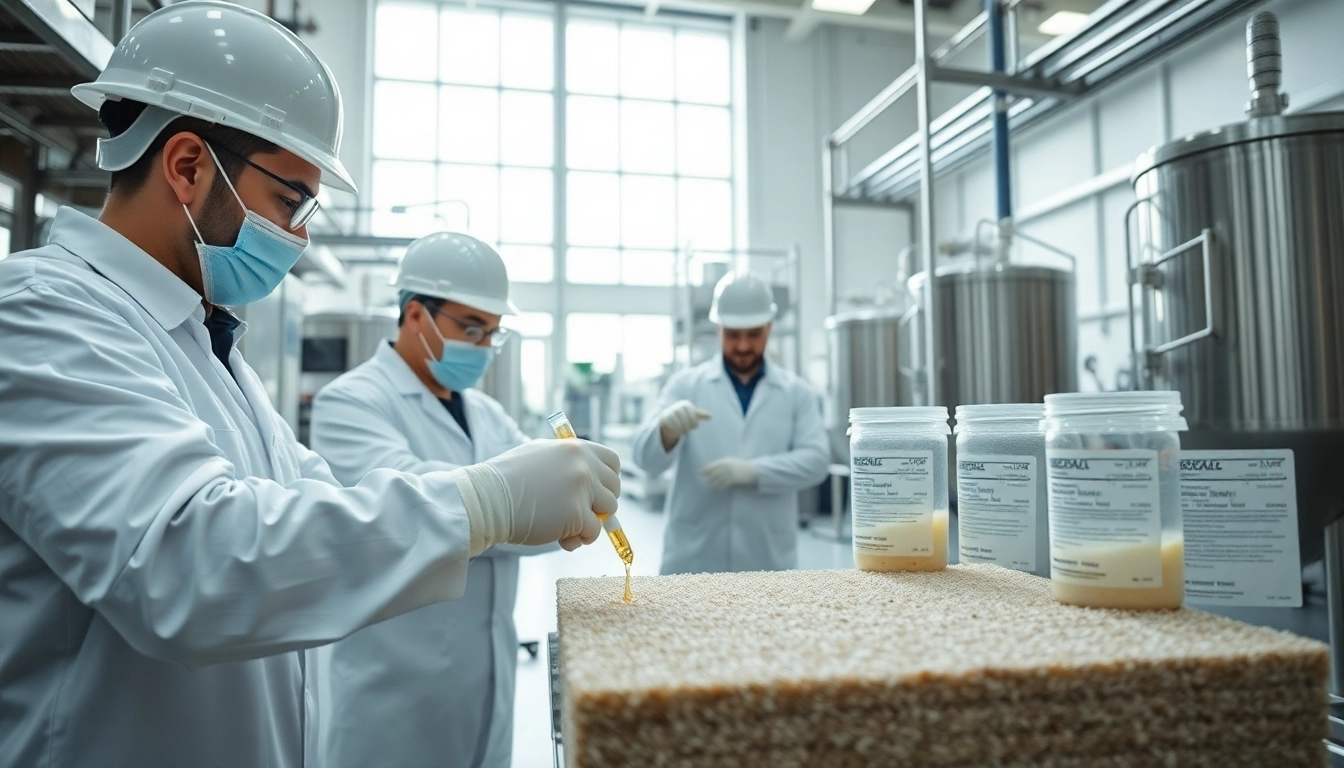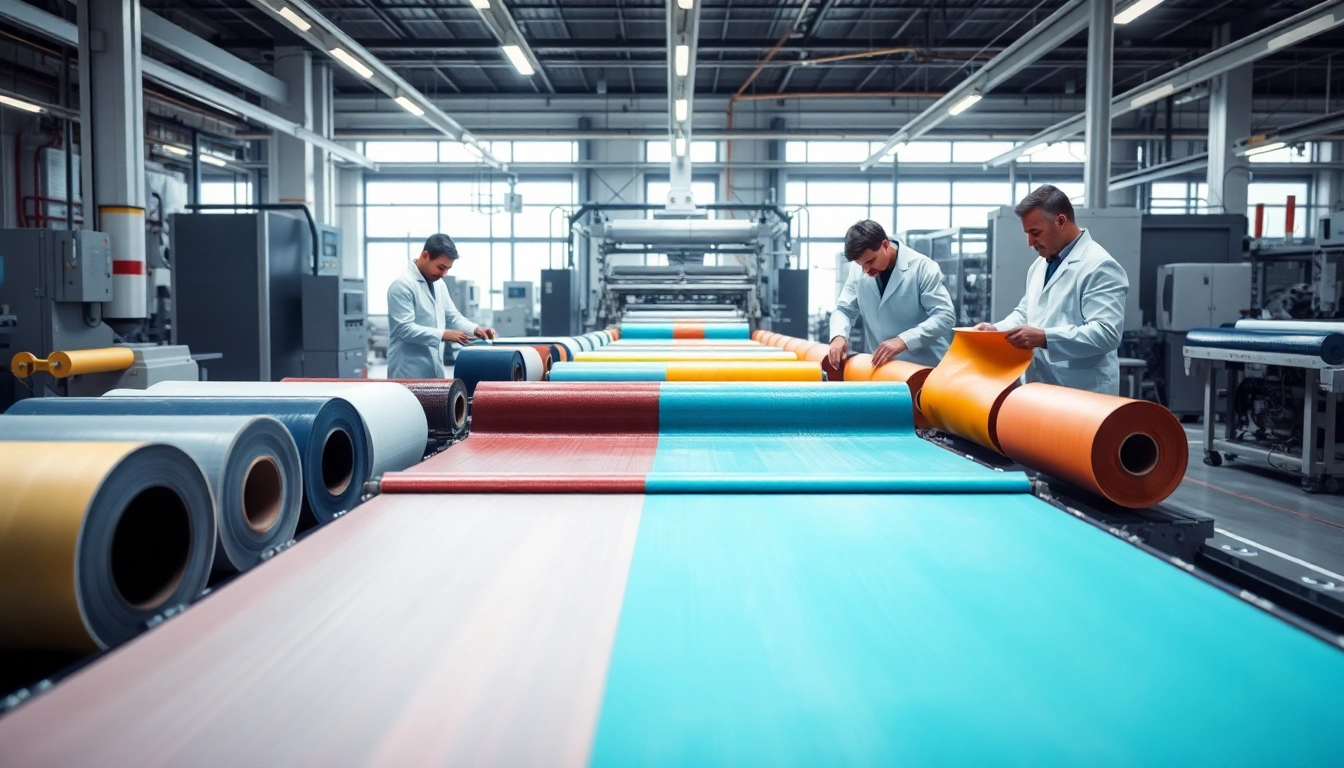Understanding Infusion Resins
What are Infusion Resins?
Infusion resins are specialized materials used in the manufacturing of composite parts through a process called resin infusion. In this technique, a dry reinforcement material, typically fiberglass or carbon fiber, is placed in a mold. The air is then evacuated, creating a vacuum that allows resin to be drawn into the material. This method not only ensures that the resin saturates the fiber completely but also minimizes the inclusion of bubbles and other imperfections, resulting in superior mechanical properties. These resins are characterized by their low viscosity, enabling easier flow and controlling the infusion process.
Applications of Infusion Resins in Various Industries
Infusion resins are versatile, finding applications in numerous industries:
- Aerospace: Used for lightweight components that demand high strength-to-weight ratios.
- Marine: Ideal for constructing durable hulls and other structures, ensuring resistance to harsh marine environments.
- Automotive: Employed in the production of composite parts that enhance vehicle performance and fuel efficiency.
- Wind Energy: Critical in fabricating turbine blades, where lightweight and strong materials are essential for efficiency.
- Construction: Utilized in building composite materials that combine strength with reduced weight for structural applications.
Benefits of Using Infusion Resins
The advantages of infusion resins are extensive and contribute to their growing popularity:
- Enhanced Mechanical Properties: Infusion resins provide improved strength and durability, making them suitable for high-performance applications.
- Improved Surface Finish: The vacuum process leads to fewer surface defects compared to other methods like hand layup.
- Efficiency in Production: The method allows for the creation of large, complex components with reduced labor and material waste.
- Environmentally Friendly: The closed process can minimize volatile organic compound (VOC) emissions, aligning with green manufacturing practices.
Selecting the Right Infusion Resins
Key Properties to Consider
When selecting infusion resins, it’s crucial to evaluate several key properties to ensure they meet specific application requirements:
- Viscosity: The viscosity must be low enough for effective infusion but high enough to prevent excessive flow.
- Cure Time: Depending on production needs, the cure time can significantly influence the overall manufacturing timeline.
- Thermal Resistance: Assess the temperature resistance needed for the intended application, especially in aerospace and automotive sectors.
- Adhesion Properties: Compatibility with different reinforcement materials is essential for achieving optimal bond strength.
- Color and Clarity: Aesthetic considerations may be important for certain applications, requiring transparent or colored options.
Choosing Based on Specific Applications
The right choice of infusion resin often depends on the end-use application:
- Aerospace Applications: Look for resins that can withstand extreme temperatures and provide high structural integrity.
- Marine Applications: Choose resins resistant to water penetration and UV degradation for longevity.
- Agriculture and Construction: Selecting tough, cost-effective resins can be beneficial for creating durable tools and components.
Comparative Analysis of Infusion Resins Variants
Different types of infusion resins are available, each offering distinct advantages:
- Polyester Resin: Known for cost-effectiveness, suitable for applications where ultimate performance isn’t critical.
- Epoxy Resin: Provides superior adhesion and thermal stability, making it ideal for high-performance applications.
- Vinylester Resin: Combines attributes of epoxy and polyester, offering better thermal and chemical resistance than standard polyester.
Application Techniques for Infusion Resins
Preparation for Infusion Process
Preparation is vital to ensure optimal results when using infusion resins:
- Mold Preparation: Clean and prepare the mold surface thoroughly to prevent defects in the final product.
- Dry Fiber Placement: Lay dry fibers into the mold, ensuring proper orientation to achieve the desired mechanical properties.
- Vacuum Bagging: Seal the mold with a vacuum bag to enable efficient resin flow while eliminating air pockets.
Optimizing the Infusion Process
To enhance the infusion process, consider the following strategies:
- Pressure Management: Maintaining a consistent vacuum pressure will aid in an even infusion of resin throughout the fibers.
- Temperature Control: Monitoring environmental temperatures can influence the viscosity and curing time of the resin.
- Flow Channels: Designing proper flow channels can facilitate effective resin distribution throughout the mold.
Common Challenges and Troubleshooting
While infusion resin processes are efficient, challenges can arise:
- Airtight Seal Failure: If the vacuum bag doesn’t maintain integrity, air pockets can form. Regular checks during the process can mitigate this issue.
- Uneven Resin Distribution: If resin does not flow evenly, reassess flow channel design and ensure vacuum pressure is adequate.
- Curing Issues: Slow or incomplete curing can affect mechanical properties. Ensure proper curing temperature and time are communicated and adhered to.
Performance Metrics of Infusion Resins
Testing for Quality Assurance
To ensure that infusion resins perform to expectations, rigorous testing protocols are essential. Common tests include:
- Tensile Testing: Evaluates the resin’s ability to withstand stretching and pulling forces.
- Flexural Testing: Tests the material’s ability to endure bending forces without breaking.
- Impact Testing: Assesses the material’s resistance to sudden, forceful impacts.
Measuring Strength and Durability
The longevity of infusion resins under various conditions can be quantified through:
- Fatigue Resistance: Evaluating how the resin behaves under repeated stress over time.
- Chemical Resistance: Testing how well the resin withstands exposure to various chemicals, particularly in marine and industrial applications.
- Moisture Absorption Testing: Assessing the amount of moisture the resin can absorb, which can influence its mechanical properties.
Evaluating Cost-Effectiveness
Cost-effectiveness analysis of infusion resins involves considering both initial investment and long-term performance:
- Material Costs: Analyzing the upfront costs of resins relative to their performance benefits.
- Long-Term Durability: Measuring the lifespan of end products can help justify the initial costs of higher-grade infusion resins.
- Production Efficiency: Evaluating how quickly and efficiently the resin can be processed plays a significant role in overall cost-effectiveness.
Future Trends in Infusion Resins Technology
Innovative Developments in Material Science
The advancement of material science is paving the way for new infusion resin technologies. Innovations may include:
- Smart Materials: Resins that respond to environmental factors, such as temperature or pressure, enhancing performance.
- Hybrid Materials: Combining multiple types of resins or fibers to create composites that harness the best properties of each material.
- Enhanced Processing Techniques: Techniques that simplify the infusion process and reduce production times, such as automated systems for resin application.
Sustainability and Eco-Friendly Infusion Solutions
As environmental considerations grow in importance, producers are increasingly focusing on sustainability:
- Bio-Based Resins: Developing resins from renewable resources to reduce reliance on petroleum-based products.
- Recyclability: Enhancing the recyclability of infusion resins to minimize waste and promote circular economies.
- Energy-Efficient Processes: Implementing less energy-intensive manufacturing techniques to reduce overall carbon footprints in resin production.
Predictions for Market Growth and Industry Standards
Experts predict significant growth in the infusion resin market driven by technological advancements and increasing demand from various sectors:
- Increased Market Size: As industries find more applications for infusion resins, the market is expected to expand significantly.
- Enhanced Regulatory Standards: Stricter environmental and safety regulations may lead to the development of higher quality and safer infusion resins.
- Global Adoption: Emerging markets are likely to start adopting infusion resin technology as manufacturing processes become more efficient and accessible.



